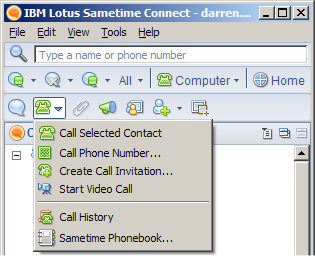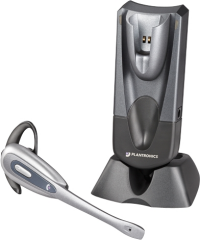I was a little behind in installing Sametime Unified Telephony (SUT) – the technical guys did it within 30 seconds of getting access to the server but it too me a couple of weeks to get round to it. But I’m glad I did.
 The key word here is ‘unified’. It’s very rare to ask a customer what they have in terms of telephony and get an answer that includes just one vendor. The answer is usually “a bit of everything”. Different locations, different business units, sometimes different departments (like the customer service centre) often have heterogeneous (impressive big word) telephony solutions. Users shouldn’t have to care, or even know, about this – they just need a set of telephony functions, and it shouldn’t matter that Bob in Glasgow is connected to a vendor’s PBX which is different to Brian in Cardiff or Kim in Florida.
The key word here is ‘unified’. It’s very rare to ask a customer what they have in terms of telephony and get an answer that includes just one vendor. The answer is usually “a bit of everything”. Different locations, different business units, sometimes different departments (like the customer service centre) often have heterogeneous (impressive big word) telephony solutions. Users shouldn’t have to care, or even know, about this – they just need a set of telephony functions, and it shouldn’t matter that Bob in Glasgow is connected to a vendor’s PBX which is different to Brian in Cardiff or Kim in Florida.
That aside, SUT does some really cool things – these features have tremendous business value, but they’re also pretty cool:
- I can use my computer as a phone
- I can click on someone in Sametime, or in a Notes e-mail or application, and call them… and…
- SUT dials the right number (office, mobile, home or computer) depending on their status and location – I don’t have to worry about where they are and which number they’re on
- I could be using my home phone for a call, but then need to leave for an appointment – using SUT I can transfer the call to my mobile phone without an interruption
- I can call someone and then turn it into a conference call by dragging and dropping people onto the call window (admit it, who knows how to conference other people in using their desk phone?)
- I can divert an incoming call to my office, home or mobile phone… or to voice-mail
- I can set up my own rules so that a particular phone rings depending on my location and / or status
- I can see when my colleagues are on the phone (and they can see when I am)
Something I always mention in talking to customers is point #5. All-to-often we use an external tele-conference provider to facilitate conference calls between internal staff members – do you know how expensive that is? Eradicating or even reducing that practise would save a lot of money, and this is just one of the ways that SUT can reduce costs.
 During my first couple of weeks as an SUT user I utilised an old Labtec headset – this worked fine until a couple of weeks ago. I mentioned to Mrs A that it had no sound coming out of it, and then she admitted to sucking the cable up in the vacuum cleaner.
During my first couple of weeks as an SUT user I utilised an old Labtec headset – this worked fine until a couple of weeks ago. I mentioned to Mrs A that it had no sound coming out of it, and then she admitted to sucking the cable up in the vacuum cleaner.
This was a good excuse to set up a wireless headset (the CS60) that the guys from Plantronics gave to me on permanent loan just before LCTY. It took about 5 minutes to install, a couple of hours for the initial charge, and was available for SUT to use without doing anything else. The sound quality is amazing, and it allows you to roam from your desk – I walked downstairs and into the kitchen without Pete Hampton hearing any difference in the sound quality. As David Angel from Plantronics said, the final three feet of the solution is incredibly important… why spend thousands of dollars on a telephony solution and then compromise it with a poor-quality headset?

You should include the link to the SUT site on lotus.com, here you go:
http://www-01.ibm.com/software/lotus/products/sametime/unifiedtelephony/
It is indeed good stuff. IBM needs to do this Microsoft offers a very powerful Microsoft branded solution that has been in market for quite a while and some customers want an IBM branded solution.
For those customers excited by this, but don’t require the IBM branded solution, don’t forget that many of IBMs existing telephony partners offer solutions today with similar capabilities, and additional features like Sametime web conferencing integration (which SUT does not provide) today that work with existing versions of Sametime.
The hardest thing for SUT deployment is going to be IBMs global services requirement, IBM’s specific hardware requirements when it first ships. I think SUT will potentially get most traction when any skilled IBM partner can deploy it for customers on any manufacturers hardware.
So how can your fiends get into the pilot ? Hint hint ?